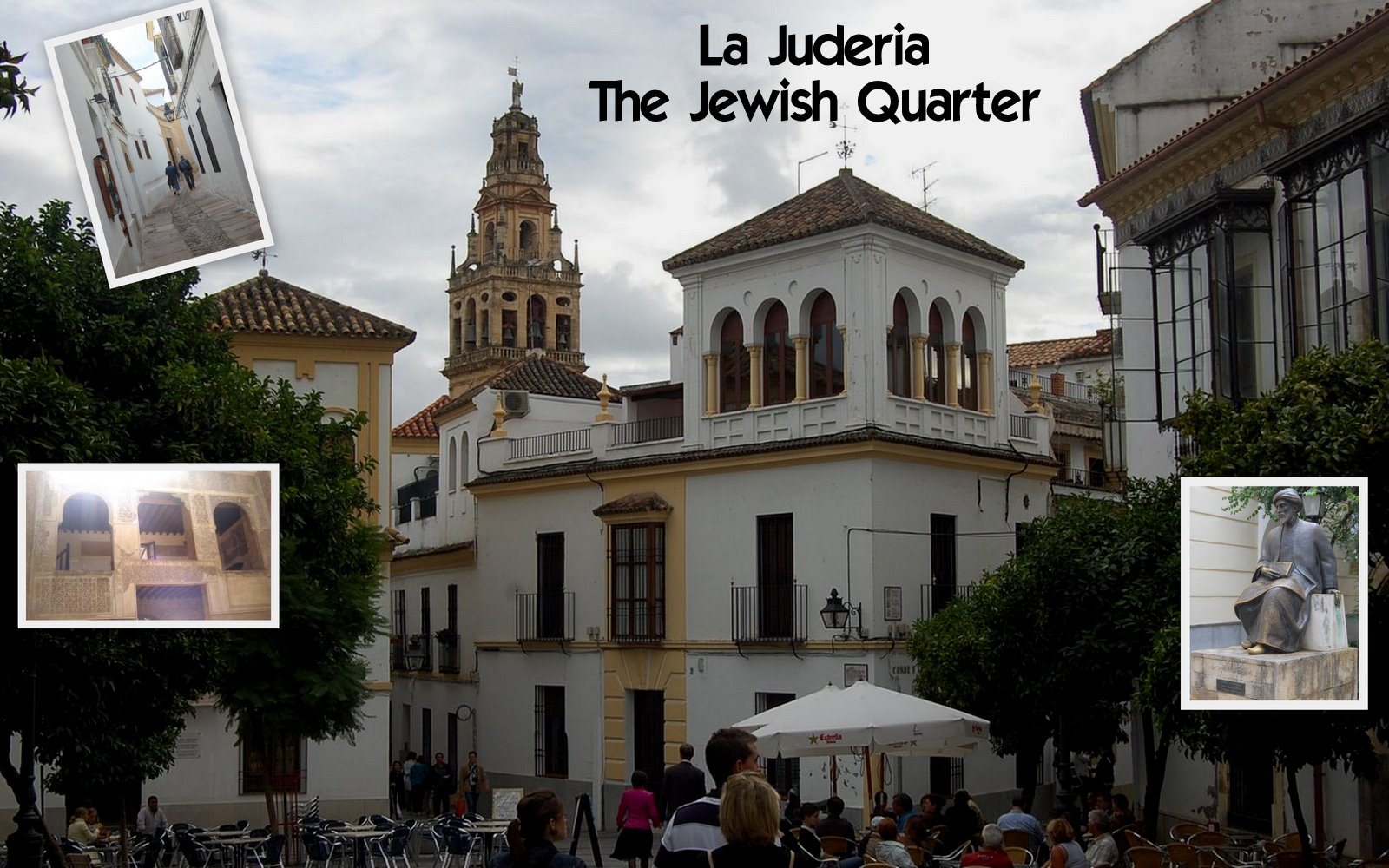
Over time, many Jews and Christians converted to Islam, in part, to escape the tax. This caused the Moors to undertake further wars of expansion to find other infidels to tax. As we see in the picture at the top of the page, the Juderia is just west of the Mosque/Cathedral and its minaret/bell tower. This wide square is somewhat deceptive as the streets are narrow. One of the widest is shown below:
The entrance to the Judería is through the Puerta de Almodóvar and this is about as wide as the street gets. The cast iron balconies are typical as are the potted plants cascading greenery in this soil-less section. Jews lived here even before the Arab invasion of the early 8th century. In general, they welcomed the Moors as rulers and built a fine synagogue.
The picture above shows the typical width of the Judería's streets. The Christians who took the town in 1236 were less tolerant than the Moors and blamed the Jews for anything that went wrong such as epidemics or disasters. They were taxed to support the Catholic churches rising in the town. Other taxes forced the Jews to pay for the Christians' war against the Moors, after which, they would be expelled from Spain. Even worse were periodic forced conversions and episodes of violence against them.
Despite eight centuries of the Moors' rule, Spain has few historic mosques. Synagogal history is just as sparse: only three synagogue buildings are left from the once thriving Jewish communities of Iberia. You will find them only here in Córdoba and in Toledo (see those pictures by clicking here .) George Orwell did not invent the eradication of history in 1984!
Unfortunately, Córdoba's Sinagoga was closed for repairs, so I had to dig out the following poor-quality shots from my Fall 2001 trip. Note the simple entrance above which leads through a narrow courtyard before entering the small vestibule of the synagogue.
Inside, the Mudéjar craftsmen created vegetable decorations as we see here in the upper gallery, the triple-arched women’s section. Architect Alarifes Isaq Moheb built this rectangular structure in 1315 AD. The Christians had previously made the Jews tear down their synagogue in the middle of the 13th century.
|
|
This shot shows the tourist-driven vibrancy of the old Jewish quarter today; but it was not always as calm. In 1391, many of Iberia's larger cities saw frequent attacks on Jews and perhaps as many as 2/3rds of the Jews converted to Christianity -- where they would often prosper and promote the emerging Italian humanism into Spain. One rabbi even became a bishop. But Córdoba was no melting pot, and the Jews stayed in their own community where many were massacred in 1473. Somehow this gets lost among the lattes and t-shirts as quaint trumps history.
Behind the bustling and cramped streets, courtyards
unfold behind brick arches. These spots compete against
each other each May in the Concurso de Patios. The one
pictured is called Zoco and it occupies the space of an
old Moorish souk (market). It’s a retail
destination for crafts, some, perhaps, even from
Córdoba.
As expected, along Calle Judias in the diminutive Plaza Tiberiades, the Jewish quarter enshrines its greatest native, the philosopher and Torah scholar Maimonides, born here in 1135. THE Jewish medieval philosopher, he was a contemporary of Averroës (whose statue we discussed outside the city walls). Like him, Maimonides was expelled and did much of his work in Egypt. And like Averroës, his influence grew well beyond his culture by influencing Thomas Aquinas. He wrote much and well, in both Hebrew and Arabic.
The great intellectual and tolerant Camelot known as Córdoba was dying during the 12th century as it birthed and then exiled two of the greatest thinkers of the middle ages: Averroës and Maimonides.
Let's next look at some of the old churches built by the Christians after they took the city back from the Moors in the 13th century; please join us by clicking here.
|
Please join us in the following slide show to give Córdoba the viewing it deserves by clicking here. |
|
Geek and Legal StuffPlease allow JavaScript to enable word definitions. This page has been tested in Internet Explorer 8.0, Firefox 3.0, and Google Chrome 1.0. Created on June 15, 2009 |
 |